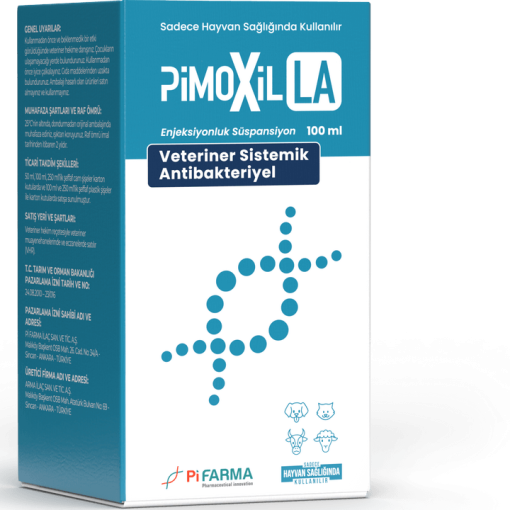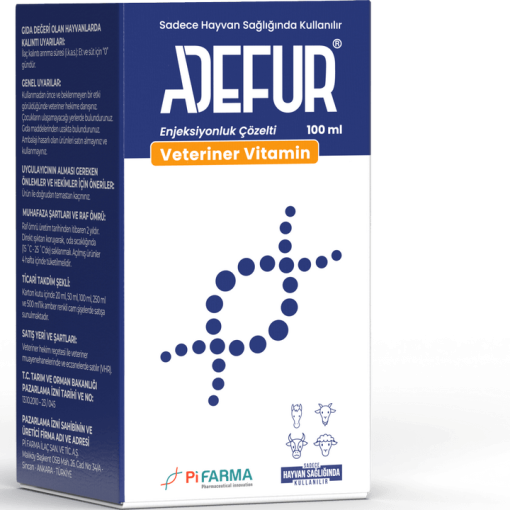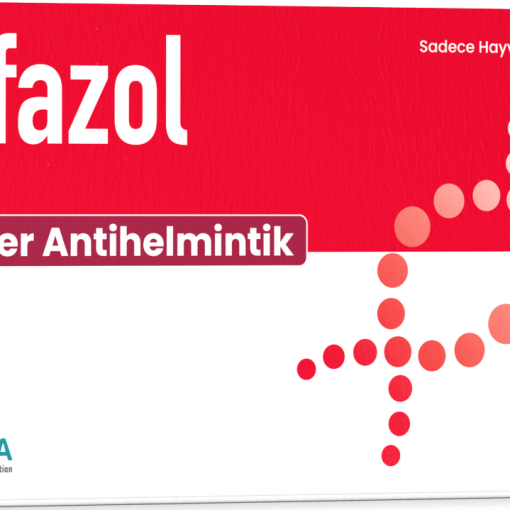For Animal Use Only
ENROX
Solution for Injection
Veterinary Systemic Antibacterial
COMPOSITION
Enrox Solution for Injection is a light yellow, clear, particle-free solution containing 100 mg of Enrofloxacin in 1 ml.
PHARMACOLOGICAL PROPERTIES
Enrofloxacin is a 3rd generation broad-spectrum antibacterial used in cattle and sheep, included in the group of fluoroquinolones. Enrofloxacin shows its bactericidal activity by inhibiting the activity of the DNA gyrase enzyme (topoisomerase II), which is responsible for bacterial DNA synthesis. Major susceptible bacteria: E.coli, Salmonella spp., Enterobacter spp., Serratia spp., Proteus spp., Klebsiella spp., Shigella spp., Yersinia spp., Moraxella spp., Acinobacter spp., Actinobacillus spp., Pasteurella spp., Leptospira spp., Campylobacter spp., Citrobacter spp., Haemophilus spp., Ehrlichia spp., Coxiella brunetti, including those resistant to methicillin and gentamicin, Staphylococcus spp., including those resistant to penicillin, N.gonorrhoeae,
N. meningiditis, Corynebacterium spp., Chlamydia spp., V.cholerae, Mycoplasma spp.
Strep. suis, Strep. agalactia, Strep dysgalactia, Strep. zooepidemicus, R.equi, Mycobacterium spp. shows moderate sensitivityMost anaerobic cocci are Clostridium spp., Bacteroides spp., and Ps. maltophila is generally less sensitive or resistant to quinolones.
Enrofloxacin is rapidly absorbed from the injection site in all animal species and diffuses into body tissues and fluids within 30 minutes to 1-2 hours. The highest concentration occurs in the liver. Its bioavailability is 80%, and its plasma protein binding rate is less than 30%. Its half-life is 2-6 hours and is excreted unchanged, mostly through the kidneys through the urine and a small part via the bile/stool.
AREA OF USE/INDICATIONS
Enrox Solution for Injection is used in the treatment of respiratory and digestive system diseases such as pleuropneumonia, gastroenteritis, septicemia, colibacillosis and other soft tissue diseases caused by Gram (-) and Gram (+) bacteria and Mycoplasmas sensitive to enrofloxacin in cattle and sheep. It is used in sensitive bacterial complications.
USAGE AND DOSAGE
Unless recommended otherwise by the veterinarian, it is administered intramuscularly (IM) or subcutaneously (SC) for 3 days at a daily pharmacological dose of 2.5 mg/kg body weight. It is recommended to be used for 5 days at a dose of 5 mg/kg/live weight only in severe and chronic infections and salmonellosis.
Practically, the application doses are as follows:
| Animal Type | Body weight | 2.5 mg/kg | 5 mg/kg |
| Lamb | 20 kg | 0.5 ml | 1 ml |
| Sheep | 40 kg | 1 ml | 2 ml |
| Calf | 100 kg | 2.5 ml | 5 ml |
| Calf-heifer | 200 kg | 5 ml | 10 ml |
| Cattle | 400 kg | 10 ml | 20 ml |
It is not recommended to inject more than 5 ml into the same area. In such cases, the dose should be divided and applied to separate areas. When using, asepsis and antisepsis should be followed.
UNDESIRED EFFECTS
They can cause articular cartilage disorders, especially in young animals during rapid development. Therefore, it should be used with caution in patients with known or suspected central nervous system disorders. Some quinolones, such as ciprofloxacin and enrofloxacin, can sometimes cause crystallization in the urinary tract. For this reason, water restriction should not be made while giving these drugs.
DRUG INTERACTIONS
Concomitant use of enrofloxacin with other drugs known to be metabolized in the liver may affect the pharmacokinetics of these drugs. It prolongs the half-lives of quinolones, theophylline, coumarin derivatives, methylxanthines, and non-steroidal pain relievers. There are synergistic interactions between fluoroquinolones and aminoglycosides, beta-lactam drugs and sulfonamides, and opposite (antagonist) interactions between phenicols, erythromycin, polymyxin, nitrofurantoin and rifampin.
SYMPTOMS, PRECAUTIONS, AND ANTIDOTE IN OVERDOSE
Its therapeutic index is wide and poisoning is not observed at therapeutic doses. It can cause damage to the kidneys when given in high doses and quickly. Patients who take large amounts of drugs should drink plenty of water and increase their urinary alkalinity rates.
RESIDUAL WARNINGS FOR FOOD PRODUCING ANIMALS
Drug Residue Elimination Period: Cattle should not be sent to slaughter during the treatment or until 14 days after the last drug application, and sheep should not be sent to slaughter during the treatment or until 10 days after the treatment. Cow’s milk obtained during the treatment and for 8 milkings (4 days) following the last drug administration should not be offered for human consumption. It should not be used in sheep-producing milk for human consumption.
CONTRAINDICATIONS
Its use is contraindicated in patients with hepatic and renal insufficiency. It should not be used in horses and young animals to be used as breeders.
Use in Pregnancy: Enrofloxacin was administered to pregnant cattle at a dose of 15 mg/kg for 15 days in 4 different critical periods of pregnancy and it did not cause any adverse effects on reproductive parameters. In dogs, no effect on libido pregnancy rate and birth puppies was observed in 10 days of enrofloxacin administration of 5-15 mg/kg bw/day starting 14, 45 and 90 days before birth. Again, no side effects were observed in dogs in studies starting from the first 10 days of pregnancy and including the first 28 days of lactation. No teratogenic effect was found in rats and chinchillas. The foetotoxic dose in rats and chinchillas was determined as 50 and 25 mg/kg body weight, respectively.
GENERAL PRECAUTIONS
Consult your veterinarian before use and in case of an unexpected effect. Keep out of reach of children.
Used packaging should be disposed of in the trash.
PRECAUTIONS TO BE TAKEN AND RECOMMENDATIONS FOR PHYSCIANS
In case of contact with skin and eyes during the application, wash your skin and eyes with plenty of water. Hands should be washed thoroughly after applying the drug. Persons sensitive to quinolones should avoid contact with the drug. In case of excessive exposure to the drug, avoid sunlight.
STORAGE CONDITIONS AND SHELF LIFE
Store in its package at room temperature and protect from light. Shelf life is 2 years from the date of manufacture. The drug should be consumed within 28 days from the withdrawal of the first dose.
END DISPOSAL AND WARNINGS FOR NON-TARGET SPECIES
Due to its effect on cartilage tissue, it should not be used before 2 months of age in cats, 8 months in small breed dogs, 12 months in medium breed dogs and 18 months in large breed dogs, and it should be taken into account that vision disorders will rarely occur in cats at a dose of 4 times (20 mg/kg).
TRADE DRESS
It is offered for sale in amber-coloured glass vials of 20 ml, 50 ml, 100 ml and 250 ml in a cardboard box.
PLACE AND CONDITIONS OF SALE
Sold in veterinary practices and pharmacies with a veterinarian’s prescription.




